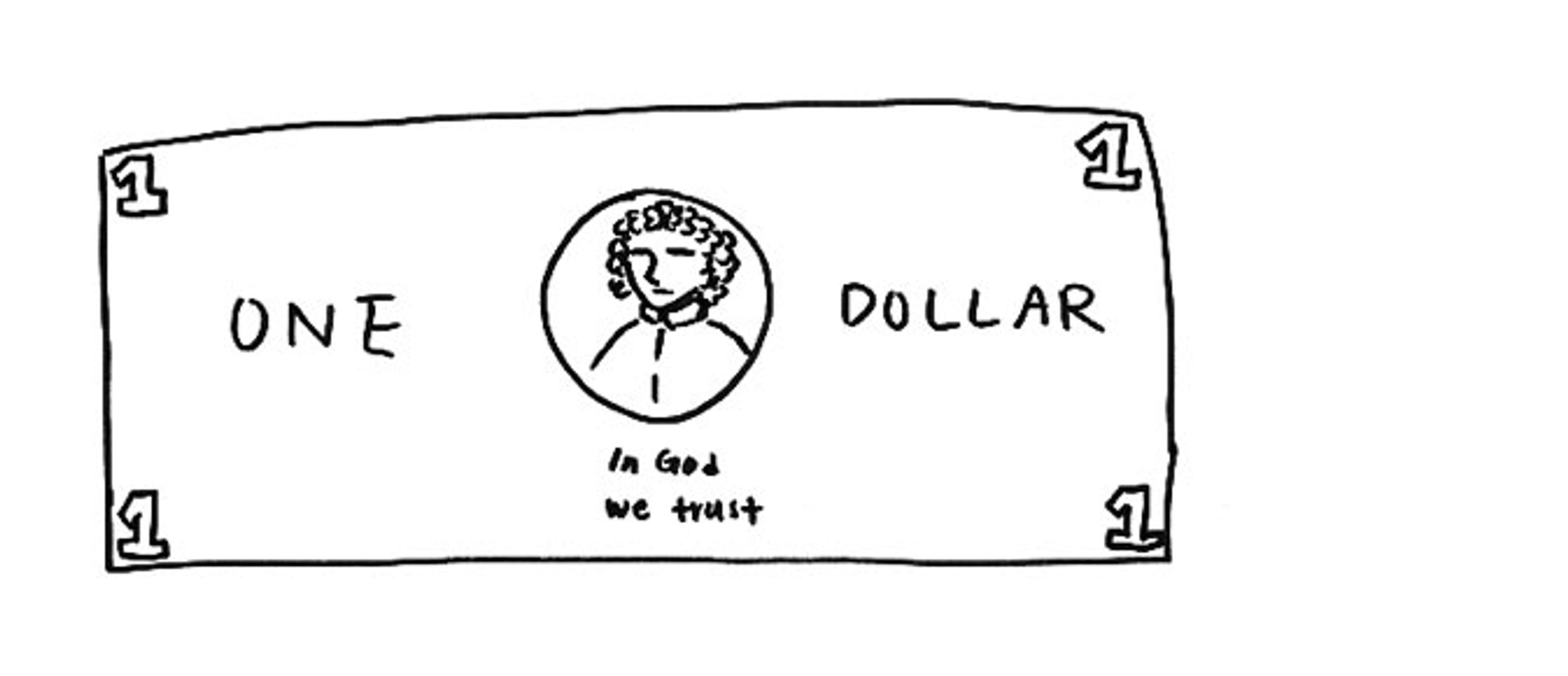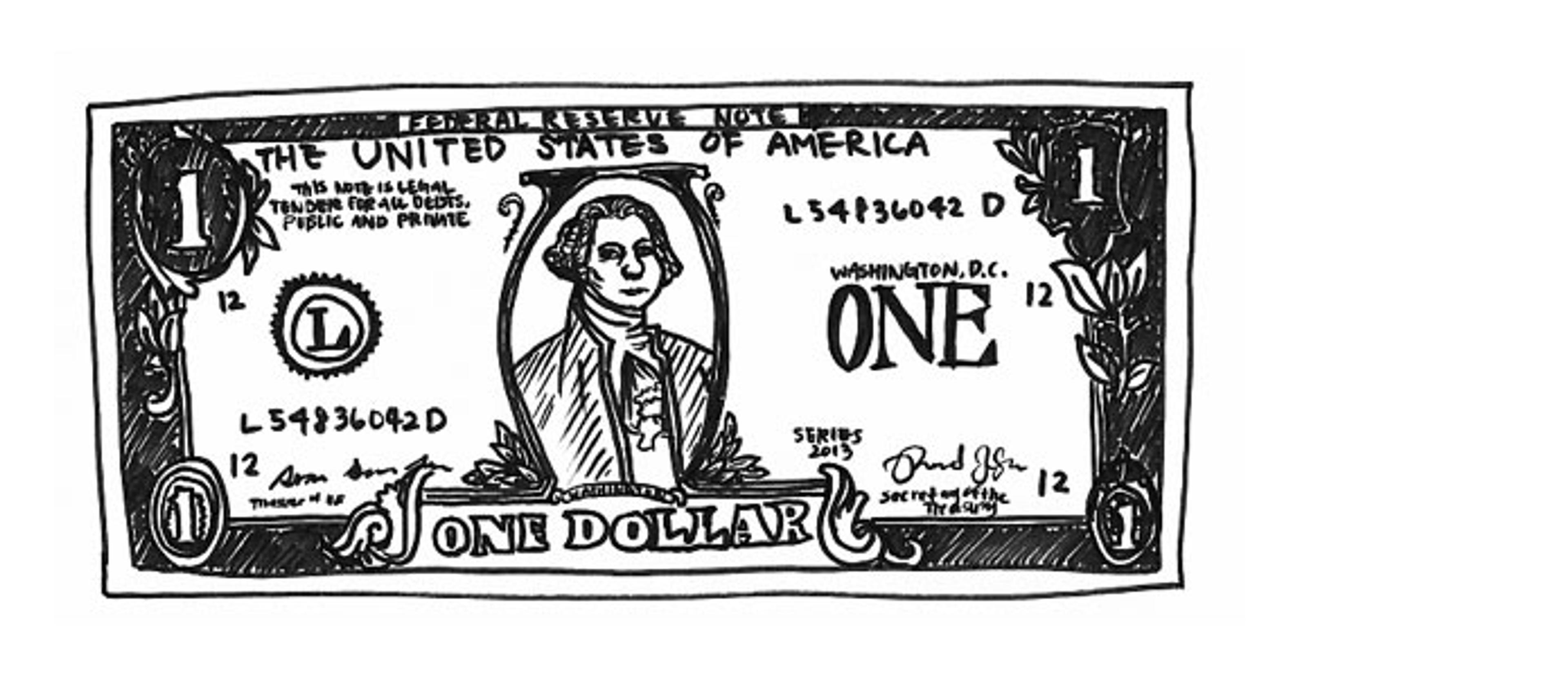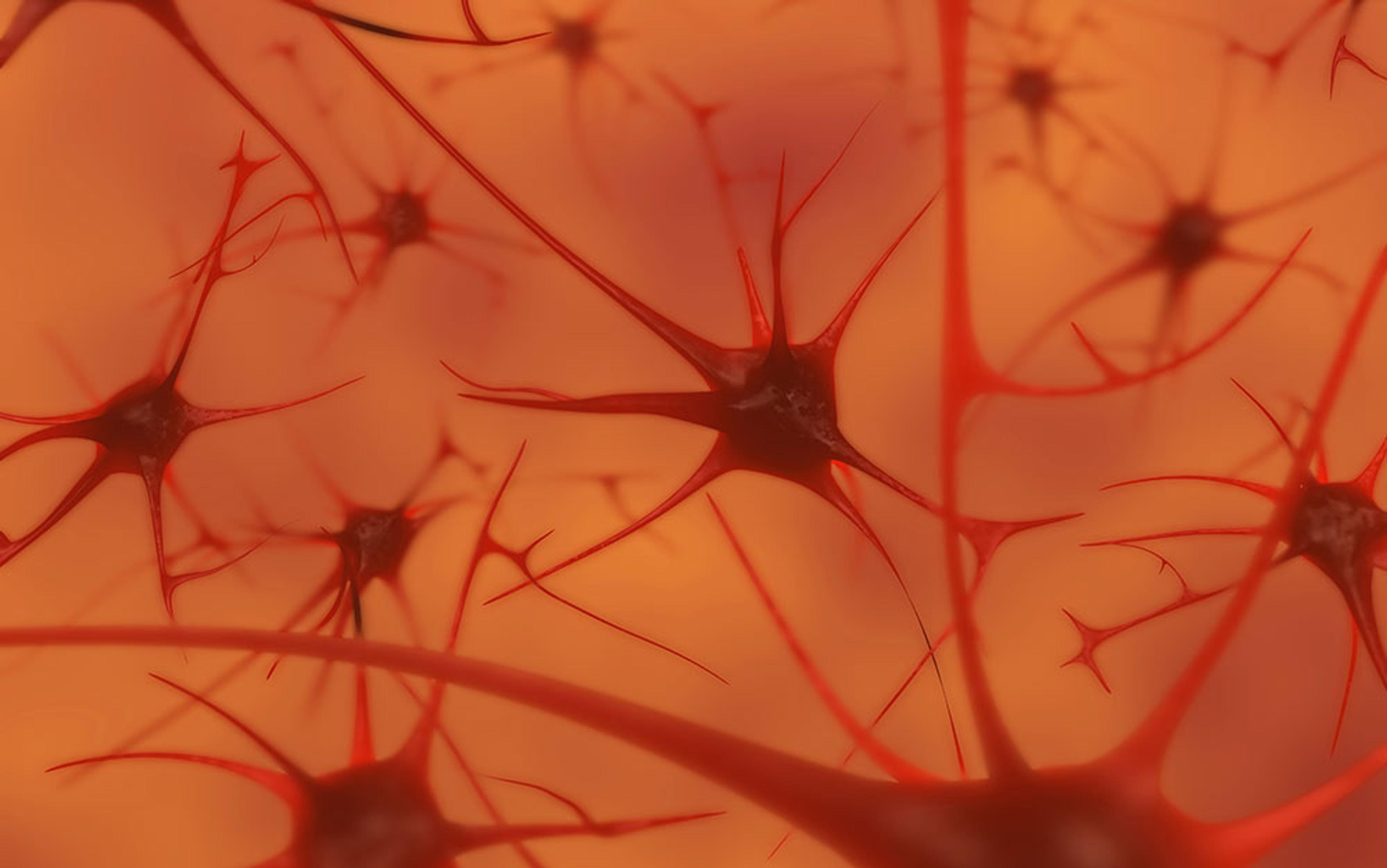No matter how hard they try, brain scientists and cognitive psychologists will never find a copy of Beethoven’s 5th Symphony in the brain – or copies of words, pictures, grammatical rules or any other kinds of environmental stimuli. The human brain isn’t really empty, of course. But it does not contain most of the things people think it does – not even simple things such as ‘memories’.
无论脑科学家和认知心理学家如何努力,他们都无法在大脑中找到贝多芬第五交响曲的副本,或者文字、图片、语法规则或其他任何环境刺激的副本。当然,人脑并不是真的空无一物。但它并不包含人们认为的大多数东西--甚至连 "记忆 "这样简单的东西也不包含。
Our shoddy thinking about the brain has deep historical roots, but the invention of computers in the 1940s got us especially confused. For more than half a century now, psychologists, linguists, neuroscientists and other experts on human behaviour have been asserting that the human brain works like a computer.
我们关于大脑的低劣思维有着深厚的历史渊源,但 20 世纪 40 年代计算机的发明尤其让我们感到困惑。半个多世纪以来,心理学家、语言学家、神经科学家和其他研究人类行为的专家一直在断言,人脑就像电脑一样工作。
To see how vacuous this idea is, consider the brains of babies. Thanks to evolution, human neonates, like the newborns of all other mammalian species, enter the world prepared to interact with it effectively. A baby’s vision is blurry, but it pays special attention to faces, and is quickly able to identify its mother’s. It prefers the sound of voices to non-speech sounds, and can distinguish one basic speech sound from another. We are, without doubt, built to make social connections.
要想知道这种想法有多么空洞,不妨看看婴儿的大脑。得益于进化,人类新生儿和所有其他哺乳动物的新生儿一样,都做好了与世界有效互动的准备。婴儿的视力是模糊的,但它特别注意面孔,并能很快辨认出母亲的面孔。比起非语言的声音,它更喜欢声音,并能区分一种基本的语言声音和另一种基本的语言声音。毫无疑问,我们是为建立社会联系而生的。
A healthy newborn is also equipped with more than a dozen reflexes – ready-made reactions to certain stimuli that are important for its survival. It turns its head in the direction of something that brushes its cheek and then sucks whatever enters its mouth. It holds its breath when submerged in water. It grasps things placed in its hands so strongly it can nearly support its own weight. Perhaps most important, newborns come equipped with powerful learning mechanisms that allow them to change rapidly so they can interact increasingly effectively with their world, even if that world is unlike the one their distant ancestors faced.
健康的新生儿还具备十多种条件反射--对某些刺激的现成反应,这对其生存非常重要。当有东西蹭到它的脸颊时,它会把头转向那个方向,然后吮吸进入口中的任何东西。浸入水中时,它会屏住呼吸。它能有力地抓住放在手中的东西,几乎能支撑自己的体重。也许最重要的是,新生儿配备了强大的学习机制,使他们能够迅速改变,从而能够越来越有效地与他们的世界互动,即使这个世界与他们遥远的祖先所面对的世界不同。
Senses, reflexes and learning mechanisms – this is what we start with, and it is quite a lot, when you think about it. If we lacked any of these capabilities at birth, we would probably have trouble surviving.
感官、反射和学习机制--这就是我们的起点,仔细想想,我们的起点还真不少。如果我们一出生就缺乏这些能力中的任何一项,我们可能会难以生存。
But here is what we are not born with: information, data, rules, software, knowledge, lexicons, representations, algorithms, programs, models, memories, images, processors, subroutines, encoders, decoders, symbols, or buffers – design elements that allow digital computers to behave somewhat intelligently. Not only are we not born with such things, we also don’t develop them – ever.
但是,我们并非生来就拥有这些东西:信息、数据、规则、软件、知识、词典、表述、算法、程序、模型、记忆、图像、处理器、子程序、编码器、解码器、符号或缓冲器--这些设计元素使数字计算机能够在一定程度上进行智能操作。我们不仅不是与生俱来就拥有这些东西,我们也从未开发过它们。
We don’t store words or the rules that tell us how to manipulate them. We don’t create representations of visual stimuli, store them in a short-term memory buffer, and then transfer the representation into a long-term memory device. We don’t retrieve information or images or words from memory registers. Computers do all of these things, but organisms do not.
我们不会存储文字或告诉我们如何操作文字的规则。我们不会创建视觉刺激的表象,将其存储在短期记忆缓冲器中,然后将表象转移到长期记忆设备中。我们不会从记忆寄存器中检索信息、图像或文字。计算机会做所有这些事情,但生物却不会。
Computers, quite literally, process information – numbers, letters, words, formulas, images. The information first has to be encoded into a format computers can use, which means patterns of ones and zeroes (‘bits’) organised into small chunks (‘bytes’). On my computer, each byte contains 8 bits, and a certain pattern of those bits stands for the letter d, another for the letter o, and another for the letter g. Side by side, those three bytes form the word dog. One single image – say, the photograph of my cat Henry on my desktop – is represented by a very specific pattern of a million of these bytes (‘one megabyte’), surrounded by some special characters that tell the computer to expect an image, not a word.
从字面上看,计算机处理的是信息--数字、字母、文字、公式和图像。信息首先要编码成计算机可以使用的格式,也就是将 1 和 0("比特")的模式组织成小块("字节")。在我的电脑上,每个字节包含 8 个比特,这些比特中的某个模式代表字母 d,另一个代表字母 o,还有一个代表字母 g。一张图片--比如,我桌面上我的猫亨利的照片--由一百万个这样的字节("一兆位")组成的一个非常特殊的模式表示,周围有一些特殊字符,告诉计算机期待的是一张图片,而不是一个单词。
Computers, quite literally, move these patterns from place to place in different physical storage areas etched into electronic components. Sometimes they also copy the patterns, and sometimes they transform them in various ways – say, when we are correcting errors in a manuscript or when we are touching up a photograph. The rules computers follow for moving, copying and operating on these arrays of data are also stored inside the computer. Together, a set of rules is called a ‘program’ or an ‘algorithm’. A group of algorithms that work together to help us do something (like buy stocks or find a date online) is called an ‘application’ – what most people now call an ‘app’.
实际上,计算机将这些图案从一个地方移动到另一个地方,在不同的物理存储区域刻入电子元件。有时,它们也会复制这些图案,有时,它们会以各种方式转换这些图案--例如,当我们纠正手稿中的错误或修饰照片时。计算机在移动、复制和操作这些数据阵列时所遵循的规则也存储在计算机内部。一组规则被称为 "程序 "或 "算法"。一组共同帮助我们做某事(如购买股票或在线约会)的算法被称为 "应用程序",也就是现在大多数人所说的 "App"。
Forgive me for this introduction to computing, but I need to be clear: computers really do operate on symbolic representations of the world. They really store and retrieve. They really process. They really have physical memories. They really are guided in everything they do, without exception, by algorithms.
请原谅我对计算机的介绍,但我必须说清楚:计算机确实是通过世界的符号表示来运行的。它们真的会存储和检索。它们真的会处理。它们真的有物理记忆。它们所做的一切,无一例外,都是在算法的指导下进行的。
Humans, on the other hand, do not – never did, never will. Given this reality, why do so many scientists talk about our mental life as if we were computers?
而人类却不会,过去不会,将来也不会。既然如此,为什么那么多科学家在谈论我们的精神生活时,会把我们当成计算机呢?
Join over 250,000+ newsletter subscribers
加入 250,000 多名时事通讯订阅者的行列
Join over 250,000+ newsletter subscribers.
Our content is 100 per cent free and you can unsubscribe anytime.
我们的内容百分之百免费,您可以随时取消订阅。
Our content is 100 per cent free and you can unsubscribe anytime.
In his book In Our Own Image (2015), the artificial intelligence expert George Zarkadakis describes six different metaphors people have employed over the past 2,000 years to try to explain human intelligence.
人工智能专家乔治-扎卡达基斯(George Zarkadakis)在其著作《我们自己的形象》(In Our Own Image,2015)中描述了过去两千年来人们试图解释人类智能的六种不同隐喻。
In the earliest one, eventually preserved in the Bible, humans were formed from clay or dirt, which an intelligent god then infused with its spirit. That spirit ‘explained’ our intelligence – grammatically, at least.
在最早的一种说法中,人类是由粘土或泥土形成的,然后由智慧之神注入其精神,最终保存在《圣经》中。这种精神 "解释 "了我们的智慧--至少在语法上是这样。
The invention of hydraulic engineering in the 3rd century BCE led to the popularity of a hydraulic model of human intelligence, the idea that the flow of different fluids in the body – the ‘humours’ – accounted for both our physical and mental functioning. The hydraulic metaphor persisted for more than 1,600 years, handicapping medical practice all the while.
公元前 3 世纪,水利工程的发明使人类智慧的水利模型大行其道,即人体内不同液体--"体液"--的流动决定了人的身体和精神功能。水力隐喻持续了 1600 多年,一直影响着医学实践。
By the 1500s, automata powered by springs and gears had been devised, eventually inspiring leading thinkers such as René Descartes to assert that humans are complex machines. In the 1600s, the British philosopher Thomas Hobbes suggested that thinking arose from small mechanical motions in the brain. By the 1700s, discoveries about electricity and chemistry led to new theories of human intelligence – again, largely metaphorical in nature. In the mid-1800s, inspired by recent advances in communications, the German physicist Hermann von Helmholtz compared the brain to a telegraph.
到 1500 年代,人们设计出了由弹簧和齿轮驱动的自动装置,最终启发了勒内-笛卡尔等著名思想家断言人类是复杂的机器。1600 年代,英国哲学家托马斯-霍布斯(Thomas Hobbes)提出,思维源于大脑中微小的机械运动。到了 17 世纪,有关电学和化学的发现引发了有关人类智慧的新理论--同样主要是隐喻性的。19 世纪中叶,德国物理学家赫尔曼-冯-亥姆霍兹(Hermann von Helmholtz)受近代通信技术进步的启发,将大脑比作电报机。
The mathematician John von Neumann stated flatly that the function of the human nervous system is ‘prima facie digital’, drawing parallel after parallel between the components of the computing machines of the day and the components of the human brain
数学家约翰-冯-诺依曼直言不讳地指出,人类神经系统的功能 "初步看来是数字化的",并将当时计算机的组成部分与人类大脑的组成部分进行了一一对比
Each metaphor reflected the most advanced thinking of the era that spawned it. Predictably, just a few years after the dawn of computer technology in the 1940s, the brain was said to operate like a computer, with the role of physical hardware played by the brain itself and our thoughts serving as software. The landmark event that launched what is now broadly called ‘cognitive science’ was the publication of Language and Communication (1951) by the psychologist George Miller. Miller proposed that the mental world could be studied rigorously using concepts from information theory, computation and linguistics.
每一个隐喻都反映了那个时代最先进的思想。可以预见的是,就在 20 世纪 40 年代计算机技术兴起的几年后,大脑被认为像计算机一样运行,大脑本身扮演着物理硬件的角色,而我们的思想则是软件。心理学家乔治-米勒(George Miller)于 1951 年出版了《语言与交流》一书,这是开启现在广义上的 "认知科学 "的里程碑事件。米勒提出,可以利用信息论、计算和语言学的概念对心理世界进行严格研究。
This kind of thinking was taken to its ultimate expression in the short book The Computer and the Brain (1958), in which the mathematician John von Neumann stated flatly that the function of the human nervous system is ‘prima facie digital’. Although he acknowledged that little was actually known about the role the brain played in human reasoning and memory, he drew parallel after parallel between the components of the computing machines of the day and the components of the human brain.
数学家约翰-冯-诺依曼在其短篇著作《计算机与大脑》(1958 年)中直言不讳地指出,人类神经系统的功能 "初步看来是数字化的"。尽管他承认人们对大脑在人类推理和记忆中所起的作用知之甚少,但他还是将当时计算机的组成部分与人类大脑的组成部分相提并论。
Propelled by subsequent advances in both computer technology and brain research, an ambitious multidisciplinary effort to understand human intelligence gradually developed, firmly rooted in the idea that humans are, like computers, information processors. This effort now involves thousands of researchers, consumes billions of dollars in funding, and has generated a vast literature consisting of both technical and mainstream articles and books. Ray Kurzweil’s book How to Create a Mind: The Secret of Human Thought Revealed (2013), exemplifies this perspective, speculating about the ‘algorithms’ of the brain, how the brain ‘processes data’, and even how it superficially resembles integrated circuits in its structure.
在随后计算机技术和大脑研究取得进展的推动下,一项雄心勃勃的多学科研究逐渐发展起来,旨在理解人类智能,并牢牢植根于人类与计算机一样都是信息处理器这一理念。目前,这项工作涉及数千名研究人员,耗资数十亿美元,并产生了大量文献,其中既有技术文章,也有主流文章和书籍。雷-库兹韦尔(Ray Kurzweil)的著作《如何创造思想?揭示人类思维的秘密》(2013 年)一书就是这种观点的典范,书中推测了大脑的 "算法"、大脑如何 "处理数据",甚至大脑结构与集成电路的表面相似之处。
The information processing (IP) metaphor of human intelligence now dominates human thinking, both on the street and in the sciences. There is virtually no form of discourse about intelligent human behaviour that proceeds without employing this metaphor, just as no form of discourse about intelligent human behaviour could proceed in certain eras and cultures without reference to a spirit or deity. The validity of the IP metaphor in today’s world is generally assumed without question.
人类智慧的信息处理(IP)隐喻现在主导着人类的思维,无论是在街头还是在科学界。几乎没有任何关于人类智能行为的论述可以不使用这一隐喻,正如在某些时代和文化中,没有任何关于人类智能行为的论述可以不提及精神或神灵一样。在当今世界,人们普遍认为知识产权隐喻的有效性是毋庸置疑的。
But the IP metaphor is, after all, just another metaphor – a story we tell to make sense of something we don’t actually understand. And like all the metaphors that preceded it, it will certainly be cast aside at some point – either replaced by another metaphor or, in the end, replaced by actual knowledge.
但是,知识产权隐喻毕竟只是另一种隐喻--一个我们用来解释我们实际上并不理解的事物的故事。就像之前的所有隐喻一样,它终究会被抛弃--要么被另一个隐喻取代,要么最终被实际知识取代。
Just over a year ago, on a visit to one of the world’s most prestigious research institutes, I challenged researchers there to account for intelligent human behaviour without reference to any aspect of the IP metaphor. They couldn’t do it, and when I politely raised the issue in subsequent email communications, they still had nothing to offer months later. They saw the problem. They didn’t dismiss the challenge as trivial. But they couldn’t offer an alternative. In other words, the IP metaphor is ‘sticky’. It encumbers our thinking with language and ideas that are so powerful we have trouble thinking around them.
就在一年多以前,我在访问世界上最负盛名的研究机构之一时,向那里的研究人员提出挑战,要求他们在不提及知识产权隐喻的任何方面的情况下,解释人类的智能行为。他们做不到,而当我在随后的电子邮件交流中礼貌地提出这个问题时,几个月后他们仍然一无所获。他们看到了问题所在。他们并没有把这个挑战视为小事。但他们无法提供替代方案。换句话说,知识产权隐喻是 "粘性 "的。它用强大的语言和观念束缚了我们的思维,使我们难以绕开它们进行思考。
The faulty logic of the IP metaphor is easy enough to state. It is based on a faulty syllogism – one with two reasonable premises and a faulty conclusion. Reasonable premise #1: all computers are capable of behaving intelligently. Reasonable premise #2: all computers are information processors. Faulty conclusion: all entities that are capable of behaving intelligently are information processors.
知识产权隐喻的错误逻辑很容易说明。它基于一个错误的三段论--一个有两个合理前提和一个错误结论的三段论。合理前提 1:所有计算机都有智能行为能力。合理前提 2:所有计算机都是信息处理器。错误的结论:所有能够进行智能行为的实体都是信息处理器。
Setting aside the formal language, the idea that humans must be information processors just because computers are information processors is just plain silly, and when, some day, the IP metaphor is finally abandoned, it will almost certainly be seen that way by historians, just as we now view the hydraulic and mechanical metaphors to be silly.
抛开形式语言不谈,仅仅因为计算机是信息处理器,人类就必须是信息处理器,这种想法实在是太愚蠢了。当有一天,IP 隐喻最终被抛弃时,历史学家几乎肯定会这样看待它,就像我们现在认为液压和机械隐喻是愚蠢的一样。
If the IP metaphor is so silly, why is it so sticky? What is stopping us from brushing it aside, just as we might brush aside a branch that was blocking our path? Is there a way to understand human intelligence without leaning on a flimsy intellectual crutch? And what price have we paid for leaning so heavily on this particular crutch for so long? The IP metaphor, after all, has been guiding the writing and thinking of a large number of researchers in multiple fields for decades. At what cost?
如果知识产权的隐喻如此愚蠢,那么它为何如此具有粘性?是什么阻止了我们把它丢在一边,就像我们把挡住我们去路的树枝丢在一边一样?有没有一种不依赖于脆弱的智力拐杖就能理解人类智慧的方法?长期以来,我们如此倚重这根特殊的拐杖,付出了怎样的代价?毕竟,几十年来,知识产权隐喻一直指导着多个领域的大量研究人员的写作和思考。代价是什么?
In a classroom exercise I have conducted many times over the years, I begin by recruiting a student to draw a detailed picture of a dollar bill – ‘as detailed as possible’, I say – on the blackboard in front of the room. When the student has finished, I cover the drawing with a sheet of paper, remove a dollar bill from my wallet, tape it to the board, and ask the student to repeat the task. When he or she is done, I remove the cover from the first drawing, and the class comments on the differences.
多年来,我曾多次在课堂上进行这样的练习:首先,我请一名学生在教室前面的黑板上详细地画出一张一元纸币,我说 "要尽可能详细"。学生完成后,我用一张纸盖住画,从钱包里取出一张一元纸币,用胶带粘在黑板上,然后要求学生重复这项任务。学生完成后,我揭下第一幅画的封面,全班同学对不同之处发表意见。
Because you might never have seen a demonstration like this, or because you might have trouble imagining the outcome, I have asked Jinny Hyun, one of the student interns at the institute where I conduct my research, to make the two drawings. Here is her drawing ‘from memory’ (notice the metaphor):
因为你可能从未见过这样的演示,或者因为你可能难以想象演示的结果,所以我请我所在研究所的实习生 Jinny Hyun 来画这两幅画。这是她 "凭记忆 "画的画(注意这个比喻):

And here is the drawing she subsequently made with a dollar bill present:
这是她后来用一美元纸币画的画:

Jinny was as surprised by the outcome as you probably are, but it is typical. As you can see, the drawing made in the absence of the dollar bill is horrible compared with the drawing made from an exemplar, even though Jinny has seen a dollar bill thousands of times.
金妮可能和你一样对结果感到惊讶,但这就是典型的情况。正如你所看到的,尽管金妮已经见过成千上万次一元纸币了,但在没有一元纸币的情况下绘制的图画与根据范例绘制的图画相比还是非常糟糕。
What is the problem? Don’t we have a ‘representation’ of the dollar bill ‘stored’ in a ‘memory register’ in our brains? Can’t we just ‘retrieve’ it and use it to make our drawing?
问题出在哪里?难道我们大脑中的 "记忆寄存器 "里没有一元纸币的 "表象 "吗?难道我们不能 "检索 "它,并用它来绘制我们的图画吗?
Obviously not, and a thousand years of neuroscience will never locate a representation of a dollar bill stored inside the human brain for the simple reason that it is not there to be found.
显然不是,一千年的神经科学研究也无法找到储存在人脑中的一美元钞票的表象,原因很简单,因为它不存在。
The idea that memories are stored in individual neurons is preposterous: how and where is the memory stored in the cell?
记忆存储在单个神经元中的想法是荒谬的:记忆如何存储在细胞中,存储在哪里?
A wealth of brain studies tells us, in fact, that multiple and sometimes large areas of the brain are often involved in even the most mundane memory tasks. When strong emotions are involved, millions of neurons can become more active. In a 2016 study of survivors of a plane crash by the University of Toronto neuropsychologist Brian Levine and others, recalling the crash increased neural activity in ‘the amygdala, medial temporal lobe, anterior and posterior midline, and visual cortex’ of the passengers.
事实上,大量的大脑研究告诉我们,即使是最普通的记忆任务,也往往会涉及多个、有时甚至是大片的大脑区域。当涉及强烈情绪时,数百万个神经元会变得更加活跃。2016 年,多伦多大学神经心理学家布莱恩-莱文(Brian Levine)等人对空难幸存者进行了一项研究,结果显示,回忆空难时,乘客 "杏仁核、内侧颞叶、前后中线和视觉皮层 "的神经活动增加。
The idea, advanced by several scientists, that specific memories are somehow stored in individual neurons is preposterous; if anything, that assertion just pushes the problem of memory to an even more challenging level: how and where, after all, is the memory stored in the cell?
一些科学家提出,特定的记忆会以某种方式储存在单个神经元中,这种想法是荒谬的;如果有的话,这种说法只会将记忆问题推向一个更具挑战性的高度:毕竟,记忆是如何以及在哪里储存在细胞中的?
So what is occurring when Jinny draws the dollar bill in its absence? If Jinny had never seen a dollar bill before, her first drawing would probably have not resembled the second drawing at all. Having seen dollar bills before, she was changed in some way. Specifically, her brain was changed in a way that allowed her to visualise a dollar bill – that is, to re-experience seeing a dollar bill, at least to some extent.
那么,当金妮在没有一元纸币的情况下画出一元纸币时,发生了什么呢?如果金妮以前从未见过一元纸币,她的第一幅画可能与第二幅画完全不一样。因为她以前见过一元纸币,所以她在某些方面发生了改变。具体地说,她的大脑发生了变化,使她能够想象出一元纸币--也就是说,至少在某种程度上重新体验了看到一元纸币的感觉。
The difference between the two diagrams reminds us that visualising something (that is, seeing something in its absence) is far less accurate than seeing something in its presence. This is why we’re much better at recognising than recalling. When we re-member something (from the Latin re, ‘again’, and memorari, ‘be mindful of’), we have to try to relive an experience; but when we recognise something, we must merely be conscious of the fact that we have had this perceptual experience before.
这两幅图之间的差异提醒我们,直观地看到某物(即在某物不存在的情况下看到某物)远不如在某物存在的情况下看到某物准确。这就是为什么我们的识别能力要比回忆能力强得多。当我们重新忆起某件事情时(源自拉丁语 re,"再次";memorari,"铭记"),我们必须努力重温一段经历;而当我们认出某件事情时,我们必须意识到我们曾经有过这段感知经历。
Perhaps you will object to this demonstration. Jinny had seen dollar bills before, but she hadn’t made a deliberate effort to ‘memorise’ the details. Had she done so, you might argue, she could presumably have drawn the second image without the bill being present. Even in this case, though, no image of the dollar bill has in any sense been ‘stored’ in Jinny’s brain. She has simply become better prepared to draw it accurately, just as, through practice, a pianist becomes more skilled in playing a concerto without somehow inhaling a copy of the sheet music.
也许你会反对这个演示。金妮以前见过美元钞票,但她并没有刻意去 "记住 "这些细节。你可能会说,如果她这样做了,她就可以在没有钞票的情况下画出第二个图像。不过,即使在这种情况下,金妮的大脑中也没有 "储存 "一美元钞票的图像。她只是为准确地画出它做了更好的准备,就像钢琴家通过练习,在没有吸入乐谱副本的情况下,也能更熟练地演奏协奏曲一样。
From this simple exercise, we can begin to build the framework of a metaphor-free theory of intelligent human behaviour – one in which the brain isn’t completely empty, but is at least empty of the baggage of the IP metaphor.
从这个简单的练习中,我们可以开始构建人类智能行为的无隐喻理论框架--在这个框架中,大脑并非完全空洞,但至少没有知识产权隐喻的包袱。
As we navigate through the world, we are changed by a variety of experiences. Of special note are experiences of three types: (1) we observe what is happening around us (other people behaving, sounds of music, instructions directed at us, words on pages, images on screens); (2) we are exposed to the pairing of unimportant stimuli (such as sirens) with important stimuli (such as the appearance of police cars); (3) we are punished or rewarded for behaving in certain ways.
当我们在世界上穿梭时,我们会被各种各样的经历所改变。特别值得注意的是三种类型的体验:(1) 我们观察周围发生的事情(其他人的行为、音乐声、对我们的指示、书页上的文字、屏幕上的图像);(2) 我们接触到不重要的刺激(如警报声)与重要的刺激(如警车的出现)的配对;(3) 我们因某种行为方式而受到惩罚或奖励。
We become more effective in our lives if we change in ways that are consistent with these experiences – if we can now recite a poem or sing a song, if we are able to follow the instructions we are given, if we respond to the unimportant stimuli more like we do to the important stimuli, if we refrain from behaving in ways that were punished, if we behave more frequently in ways that were rewarded.
如果我们的改变与这些经验相一致--如果我们现在能背诵一首诗或唱一首歌,如果我们能听从别人的指示,如果我们对不重要的刺激的反应更像我们对重要刺激的反应,如果我们不以受惩罚的方式行事,如果我们更经常地以受奖励的方式行事,那么我们的生活就会变得更有效。
Misleading headlines notwithstanding, no one really has the slightest idea how the brain changes after we have learned to sing a song or recite a poem. But neither the song nor the poem has been ‘stored’ in it. The brain has simply changed in an orderly way that now allows us to sing the song or recite the poem under certain conditions. When called on to perform, neither the song nor the poem is in any sense ‘retrieved’ from anywhere in the brain, any more than my finger movements are ‘retrieved’ when I tap my finger on my desk. We simply sing or recite – no retrieval necessary.
尽管标题具有误导性,但没有人真正知道,在我们学会唱一首歌或背一首诗之后,大脑会发生怎样的变化。但是,无论是歌曲还是诗歌都没有 "储存 "在大脑中。大脑只是以一种有序的方式发生了变化,使我们现在能够在特定条件下演唱歌曲或朗诵诗歌。当被要求表演时,歌曲或诗歌都没有从大脑中的任何地方 "检索 "出来,就像我用手指敲击桌面时 "检索 "出我的手指动作一样。我们只需歌唱或朗诵--无需检索。
A few years ago, I asked the neuroscientist Eric Kandel of Columbia University – winner of a Nobel Prize for identifying some of the chemical changes that take place in the neuronal synapses of the Aplysia (a marine snail) after it learns something – how long he thought it would take us to understand how human memory works. He quickly replied: ‘A hundred years.’ I didn’t think to ask him whether he thought the IP metaphor was slowing down neuroscience, but some neuroscientists are indeed beginning to think the unthinkable – that the metaphor is not indispensable.
几年前,我曾问哥伦比亚大学的神经科学家埃里克-坎德尔--他曾因确认了一种海洋蜗牛(Aplysia)在学习某些知识后神经元突触中发生的一些化学变化而获得诺贝尔奖--他认为我们需要多长时间才能了解人类记忆的工作原理。他很快回答说:'一百年。我没想过要问他是否认为 IP 隐喻拖慢了神经科学的发展,但一些神经科学家确实开始有了不可思议的想法--隐喻并非不可或缺。
A few cognitive scientists – notably Anthony Chemero of the University of Cincinnati, the author of Radical Embodied Cognitive Science (2009) – now completely reject the view that the human brain works like a computer. The mainstream view is that we, like computers, make sense of the world by performing computations on mental representations of it, but Chemero and others describe another way of understanding intelligent behaviour – as a direct interaction between organisms and their world.
一些认知科学家,尤其是《激进的嵌入式认知科学》(Radical Embodied Cognitive Science,2009 年)的作者、辛辛那提大学的安东尼-切默罗(Anthony Chemero),现在完全否定了人脑像计算机一样工作的观点。主流观点认为,我们和计算机一样,通过对世界的心理表征进行计算来理解世界,但切梅罗和其他人描述了另一种理解智能行为的方式--生物体与其世界之间的直接互动。
My favourite example of the dramatic difference between the IP perspective and what some now call the ‘anti-representational’ view of human functioning involves two different ways of explaining how a baseball player manages to catch a fly ball – beautifully explicated by Michael McBeath, now at Arizona State University, and his colleagues in a 1995 paper in Science. The IP perspective requires the player to formulate an estimate of various initial conditions of the ball’s flight – the force of the impact, the angle of the trajectory, that kind of thing – then to create and analyse an internal model of the path along which the ball will likely move, then to use that model to guide and adjust motor movements continuously in time in order to intercept the ball.
我最喜欢的一个例子是,在解释棒球运动员如何接住高飞球时,有两种不同的方法,这两种方法被现就职于亚利桑那州立大学的迈克尔-麦克比斯(Michael McBeath)和他的同事在 1995 年发表在《科学》杂志上的一篇论文中作了很好的阐述。IP 视角要求球员对球飞行的各种初始条件--撞击力、轨迹角度等--做出估计,然后建立并分析球可能移动路径的内部模型,然后利用该模型及时指导并不断调整运动动作,以便拦截住球。
That is all well and good if we functioned as computers do, but McBeath and his colleagues gave a simpler account: to catch the ball, the player simply needs to keep moving in a way that keeps the ball in a constant visual relationship with respect to home plate and the surrounding scenery (technically, in a ‘linear optical trajectory’). This might sound complicated, but it is actually incredibly simple, and completely free of computations, representations and algorithms.
如果我们能像计算机一样运作,这一切都很好,但麦克比斯和他的同事们给出了一个更简单的解释:要接住球,球员只需保持移动,使球与本垒板和周围景物保持恒定的视觉关系(严格来说,是 "线性光学轨迹")。这听起来似乎很复杂,但实际上却非常简单,完全不需要计算、表述和算法。
we will never have to worry about a human mind going amok in cyberspace, and we will never achieve immortality through downloading
我们永远不必担心人类的大脑会在网络空间中肆意妄为,我们也永远不会通过下载实现永生。
Two determined psychology professors at Leeds Beckett University in the UK – Andrew Wilson and Sabrina Golonka – include the baseball example among many others that can be looked at simply and sensibly outside the IP framework. They have been blogging for years about what they call a ‘more coherent, naturalised approach to the scientific study of human behaviour… at odds with the dominant cognitive neuroscience approach’. This is far from a movement, however; the mainstream cognitive sciences continue to wallow uncritically in the IP metaphor, and some of the world’s most influential thinkers have made grand predictions about humanity’s future that depend on the validity of the metaphor.
英国利兹贝克特大学(Leeds Beckett University)的两位坚定的心理学教授--安德鲁-威尔逊(Andrew Wilson)和萨布丽娜-戈隆卡(Sabrina Golonka)--在知识产权框架之外可以简单而明智地看待的许多其他例子中,就包括棒球的例子。多年来,他们一直在博客上讨论他们所谓的 "更加连贯、自然化的人类行为科学研究方法......与占主导地位的认知神经科学方法相悖"。然而,这远非一场运动;主流认知科学仍然不加批判地沉湎于知识产权隐喻之中,一些世界上最有影响力的思想家对人类未来做出了宏伟的预测,而这些预测都依赖于知识产权隐喻的有效性。
One prediction – made by the futurist Kurzweil, the physicist Stephen Hawking and the neuroscientist Randal Koene, among others – is that, because human consciousness is supposedly like computer software, it will soon be possible to download human minds to a computer, in the circuits of which we will become immensely powerful intellectually and, quite possibly, immortal. This concept drove the plot of the dystopian movie Transcendence (2014) starring Johnny Depp as the Kurzweil-like scientist whose mind was downloaded to the internet – with disastrous results for humanity.
未来学家库兹韦尔、物理学家斯蒂芬-霍金和神经科学家兰道尔-科恩等人的一个预测是,由于人类的意识据说就像计算机软件一样,因此很快就可以将人类的思想下载到计算机中,在计算机的电路中,我们将变得智力无比强大,而且很有可能长生不老。这一概念推动了乌托邦电影《超验》(Transcendence,2014 年)的剧情发展,约翰尼-德普(Johnny Depp)在片中饰演一位酷似库兹韦尔的科学家,他的思想被下载到互联网上,给人类带来了灾难性的后果。
Fortunately, because the IP metaphor is not even slightly valid, we will never have to worry about a human mind going amok in cyberspace; alas, we will also never achieve immortality through downloading. This is not only because of the absence of consciousness software in the brain; there is a deeper problem here – let’s call it the uniqueness problem – which is both inspirational and depressing.
幸运的是,由于知识产权的隐喻根本不成立,我们永远不必担心人类的大脑会在网络空间中肆意妄为;唉,我们也永远无法通过下载实现永生。这不仅是因为大脑中没有意识软件,还有一个更深层次的问题--我们姑且称之为 "唯一性问题"--既令人鼓舞,又令人沮丧。
Because neither ‘memory banks’ nor ‘representations’ of stimuli exist in the brain, and because all that is required for us to function in the world is for the brain to change in an orderly way as a result of our experiences, there is no reason to believe that any two of us are changed the same way by the same experience. If you and I attend the same concert, the changes that occur in my brain when I listen to Beethoven’s 5th will almost certainly be completely different from the changes that occur in your brain. Those changes, whatever they are, are built on the unique neural structure that already exists, each structure having developed over a lifetime of unique experiences.
因为大脑中既不存在 "记忆库",也不存在刺激物的 "表征",而且我们在世界上发挥作用所需要的只是大脑因我们的经历而有序地发生变化,所以没有理由相信我们中的任何两个人会因相同的经历而发生相同的变化。如果你和我参加了同一场音乐会,当我聆听贝多芬第五交响曲时,我大脑中发生的变化几乎可以肯定与你大脑中发生的变化完全不同。这些变化,不管是什么,都是建立在已有的独特神经结构之上的,每种结构都是在一生的独特经历中发展起来的。
This is why, as Sir Frederic Bartlett demonstrated in his book Remembering (1932), no two people will repeat a story they have heard the same way and why, over time, their recitations of the story will diverge more and more. No ‘copy’ of the story is ever made; rather, each individual, upon hearing the story, changes to some extent – enough so that when asked about the story later (in some cases, days, months or even years after Bartlett first read them the story) – they can re-experience hearing the story to some extent, although not very well (see the first drawing of the dollar bill, above).
这就是为什么弗雷德里克-巴特利特爵士在他的《记忆》(1932 年)一书中证明,没有两个人会以同样的方式重复他们听过的故事,而且随着时间的推移,他们对故事的复述会越来越不同。没有人 "复制 "过这个故事;相反,每个人在听到这个故事后,都会在一定程度上发生变化--以至于后来(在某些情况下,在巴特利特第一次给他们读故事后的几天、几个月甚至几年后)被问及这个故事时,他们可以在一定程度上重新体验听到这个故事的感觉,尽管不是很好(见上文第一张一元纸币的图画)。
This is inspirational, I suppose, because it means that each of us is truly unique, not just in our genetic makeup, but even in the way our brains change over time. It is also depressing, because it makes the task of the neuroscientist daunting almost beyond imagination. For any given experience, orderly change could involve a thousand neurons, a million neurons or even the entire brain, with the pattern of change different in every brain.
我想,这是鼓舞人心的,因为这意味着我们每个人都是独一无二的,不仅在基因构成上,甚至在大脑随时间变化的方式上也是如此。但这也令人沮丧,因为它使神经科学家的任务变得艰巨,几乎超乎想象。对于任何特定的经历,有序变化可能涉及一千个神经元、一百万个神经元甚至整个大脑,而每个大脑的变化模式都不尽相同。
Worse still, even if we had the ability to take a snapshot of all of the brain’s 86 billion neurons and then to simulate the state of those neurons in a computer, that vast pattern would mean nothing outside the body of the brain that produced it. This is perhaps the most egregious way in which the IP metaphor has distorted our thinking about human functioning. Whereas computers do store exact copies of data – copies that can persist unchanged for long periods of time, even if the power has been turned off – the brain maintains our intellect only as long as it remains alive. There is no on-off switch. Either the brain keeps functioning, or we disappear. What’s more, as the neurobiologist Steven Rose pointed out in The Future of the Brain (2005), a snapshot of the brain’s current state might also be meaningless unless we knew the entire life history of that brain’s owner – perhaps even about the social context in which he or she was raised.
更糟糕的是,即使我们有能力给大脑中的 860 亿个神经元拍一张快照,然后在计算机中模拟这些神经元的状态,这种庞大的模式在产生这种模式的大脑之外也毫无意义。这也许是知识产权隐喻扭曲我们对人类功能思考的最严重方式。计算机确实可以存储数据的精确副本--即使电源被关闭,副本也可以长期保持不变--而大脑只有在它活着的时候才能保持我们的智力。没有开关。要么大脑继续运转,要么我们消失。此外,正如神经生物学家史蒂文-罗斯(Steven Rose)在《大脑的未来》(The Future of the Brain,2005 年)一书中指出的那样,除非我们了解大脑主人的整个生活史,甚至可能了解他或她成长的社会背景,否则大脑当前状态的快照也可能毫无意义。
Think how difficult this problem is. To understand even the basics of how the brain maintains the human intellect, we might need to know not just the current state of all 86 billion neurons and their 100 trillion interconnections, not just the varying strengths with which they are connected, and not just the states of more than 1,000 proteins that exist at each connection point, but how the moment-to-moment activity of the brain contributes to the integrity of the system. Add to this the uniqueness of each brain, brought about in part because of the uniqueness of each person’s life history, and Kandel’s prediction starts to sound overly optimistic. (In a recent op-ed in The New York Times, the neuroscientist Kenneth Miller suggested it will take ‘centuries’ just to figure out basic neuronal connectivity.)
想想这个问题有多难。要想了解大脑如何维持人类智力的基本原理,我们可能不仅需要知道所有 860 亿个神经元及其 100 万亿个相互连接点的当前状态,不仅需要知道它们连接的不同强度,也不仅需要知道存在于每个连接点的 1000 多种蛋白质的状态,还需要知道大脑每时每刻的活动如何促进系统的完整性。再加上每个人大脑的独特性(部分原因是每个人生活史的独特性),坎德尔的预测开始听起来过于乐观了。(神经科学家肯尼思-米勒(Kenneth Miller)最近在《纽约时报》上发表的一篇专栏文章中指出,仅仅弄清基本的神经元连接就需要 "几个世纪")。
Meanwhile, vast sums of money are being raised for brain research, based in some cases on faulty ideas and promises that cannot be kept. The most blatant instance of neuroscience gone awry, documented recently in a report in Scientific American, concerns the $1.3 billion Human Brain Project launched by the European Union in 2013. Convinced by the charismatic Henry Markram that he could create a simulation of the entire human brain on a supercomputer by the year 2023, and that such a model would revolutionise the treatment of Alzheimer’s disease and other disorders, EU officials funded his project with virtually no restrictions. Less than two years into it, the project turned into a ‘brain wreck’, and Markram was asked to step down.
与此同时,人们正在为大脑研究筹集巨额资金,在某些情况下,这些资金是基于错误的想法和无法兑现的承诺。科学美国人》最近的一篇报道记录了神经科学出错的最明显例子,涉及欧盟于2013年启动的耗资13亿美元的人脑项目。富有魅力的亨利-马克拉姆(Henry Markram)深信,他能在 2023 年之前用超级计算机模拟出整个人类大脑,而这样一个模型将彻底改变阿尔茨海默氏症和其他疾病的治疗方法,因此欧盟官员几乎不加任何限制地资助了他的项目。项目实施不到两年,就变成了一个 "大脑残骸",马克拉姆被要求下台。
We are organisms, not computers. Get over it. Let’s get on with the business of trying to understand ourselves, but without being encumbered by unnecessary intellectual baggage. The IP metaphor has had a half-century run, producing few, if any, insights along the way. The time has come to hit the DELETE key.
我们是生物,不是电脑。别再想了。让我们继续努力了解自己,但不要被不必要的知识包袱所束缚。知识产权隐喻已经走过了半个世纪的历程,一路走来,即使有所启示,也寥寥无几。现在是按下删除键的时候了。






